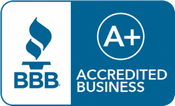
New Revenue Recognition Rules Particularly Impact Technology and Software Companies
Published on October 03, 2018
 The new revenue recognition standard fundamentally changes the way we think about financial reporting, and it impacts all industries. But, for those in the software and technology business, things get particularly tricky.
The new revenue recognition standard fundamentally changes the way we think about financial reporting, and it impacts all industries. But, for those in the software and technology business, things get particularly tricky.
The new standard changes both financial statement disclosures and how your company will account for revenue and related transactions. As the owner of a technology company, so much of your work is characterized as intellectual property and your contracts and licenses are complex and multi-layered. For this reason, you’ll need to more closely analyze how you’ll be affected by the new standard. Beyond additional disclosure, the timing of revenue recognition, as well as the treatment of incremental costs to obtain a contract, could change significantly for tech companies -- and especially for software companies.
Here are 3 things to be aware of:
“Right to Access” and “Right to Use”
The new standard states that companies should account for a promise to provide a customer with the “right to access” the company’s intellectual property as a performance obligation satisfied over time because the customer will simultaneously receive and consume the benefit from the company’s performance of providing access to its intellectual properly as the performance occurs. If given the right to access the company’s intellectual property, the control is being transferred over time, and revenue is recognized accordingly.
In contrast, a company’s promise to provide a customer with the “right to use” the company’s intellectual property is satisfied at a point in time. As a result, revenue is recognized at the point in time at which the license is transferred.
It all comes down one question: When does the customer obtain the license?
Here are some examples:
- Intellectual property with no standalone functionality (e.g., a team logo): right to access and revenue recognized ratably over the duration of the contract period.
- An SaaS-based agreement in which the customer has access to the software for a period of time: right to access and revenue recognized ratably over the duration of the contract period.
- Intellectual property that has standalone functionality and the software is fully usable upon delivery with no remaining performance obligations by the company: right to use and revenue recognized at time of delivery.
While we believe that the vast majority of software licenses will fall into the “right to use” category, and therefore have revenue recognized at a point in time, we don’t want to over-generalize. Be sure to work with your accountant to clarify your particular situation. You may, of course, be delivering products that fall into both categories.
Multiple Element Arrangements
Intellectual property licenses, including software licenses, often include other elements as part of the contract. For example, a license for a functional software program may transfer control to the customer at a point in time, but the contract may also include additional support services and updates which have not been separately priced in the contract and will be delivered at times in the future. Contracts may include performance obligations such as maintenance, technical support, hosting, training, etc. Companies must take care to diligently identify the separate performance obligations and recognize revenue appropriately as or when performance obligations are satisfied.
When a company sells products and services separately, the value of each item is immediately clear. Often, however, these services are bundled into one price. In this case, the transaction price must be reasonably allocated across the different performance obligations. This becomes even more important when the different elements are recognized at various times.
License renewals
The renewal of a contract should not be combined with the original contract, and revenue related to the renewal may not be recognized until the beginning of the renewal period.
The new principle-based approach is more conceptual than current generally accepted accounting principles (GAAP) and will require significant judgment to apply. The new financial reporting rules are nuanced, so we strongly suggest you work closely with a CPA firm that has a firm grasp on the new rules. We’re here to help you make the transition to the new standard as smooth as possible.






